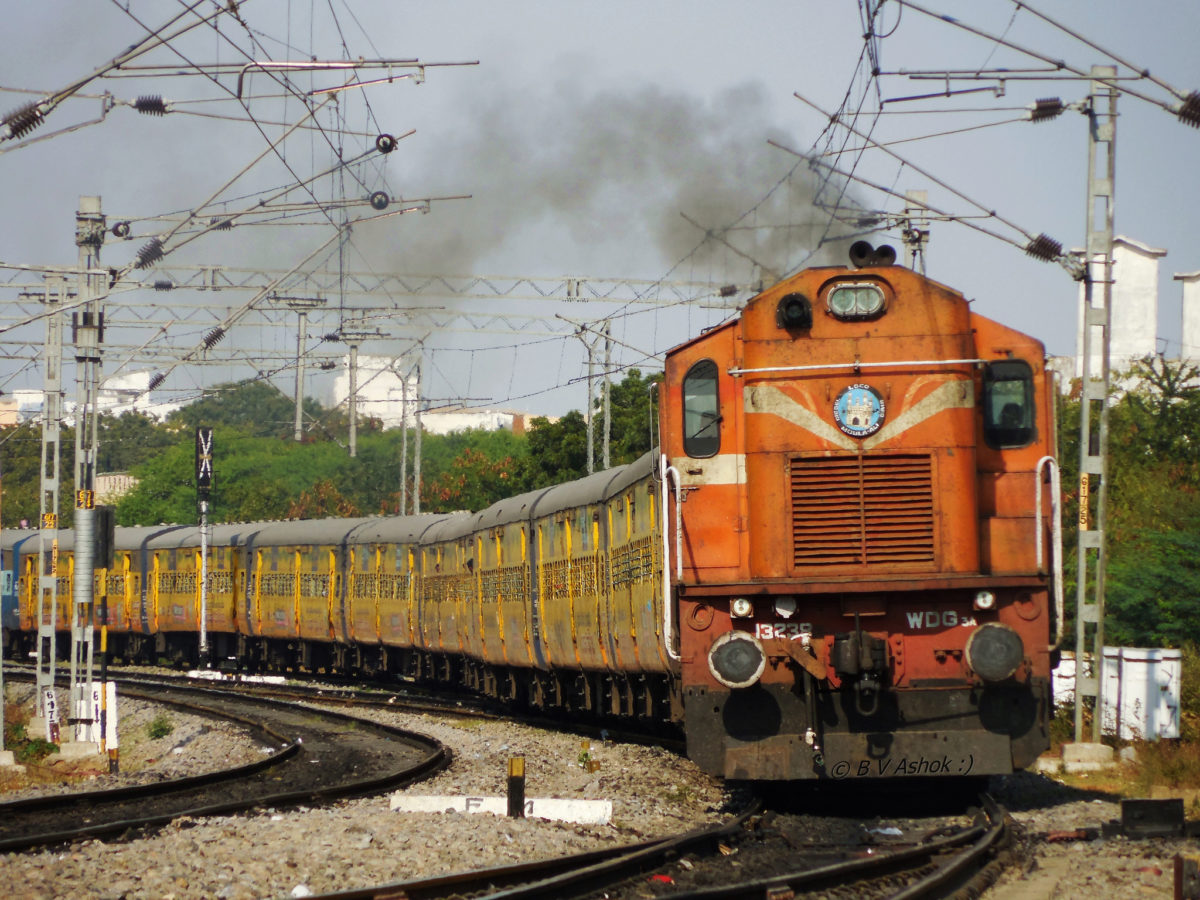To reduce its annual electricity bill, Indian Railways will soon run trains powered by solar power from arrays of PV cells deployed along electrified tracks in 10 states. The solar power generated will replace 4 GW of coal-fired electricity consumed by the railways, saving the operator 20% of its annual energy bill in the first year and 40% thereafter. Indian Railways currently buys electricity for around Rs5 per unit.
Developers will recover the installation cost of solar panels and other equipment through the sale of power to the railway operator. Under an agreement with states, there will be a provision to sell surplus power to the local utilities, which will supply equivalent power when Indian Railways needs it.
The railway board is examining a project bid document prepared by the Solar Energy Corporation of India which recommends PV electricity from panels be fed through inverters and step-up transformers directly into the 25 kV overhead traction system. That would eliminate the cost of laying separate transmission lines and boost manufacturing of 25 kV single-phase inverters.
A boost for inverter manufacturing
Around 20 manufacturers, including ABB, Huawei, Delta and Sungrow, are said to be interested in manufacturing the equipment given sufficient demand, according to the Times of India. “This is a historic step towards Indian Railways becoming a net zero emitter by 2030,” railways and coal minister Piyush Goyal told the daily newspaper. “Indian Railways is by far the greenest travel option for transportation.”
Under the proposal, Indian Railways will offer vacant land on both sides of selected tracks.
The government of India is encouraging cash-rich public sector undertakings to set up renewable energy projects. Indian Railways has committed to developing 5 GW of solar by 2025.
As part of the Go Green Initiative, the train operator has already installed around 71.19 MW of rooftop PV on stations and service buildings and the company is planning to add solar panels to the rooftops of its rolling stock. It has already installed panels on the rooftops of 19 narrow-gauge coaches and 23 broad-gauge non-air conditioned coaches that are in service.
This content is protected by copyright and may not be reused. If you want to cooperate with us and would like to reuse some of our content, please contact: editors@pv-magazine.com.









1 comment
By submitting this form you agree to pv magazine using your data for the purposes of publishing your comment.
Your personal data will only be disclosed or otherwise transmitted to third parties for the purposes of spam filtering or if this is necessary for technical maintenance of the website. Any other transfer to third parties will not take place unless this is justified on the basis of applicable data protection regulations or if pv magazine is legally obliged to do so.
You may revoke this consent at any time with effect for the future, in which case your personal data will be deleted immediately. Otherwise, your data will be deleted if pv magazine has processed your request or the purpose of data storage is fulfilled.
Further information on data privacy can be found in our Data Protection Policy.